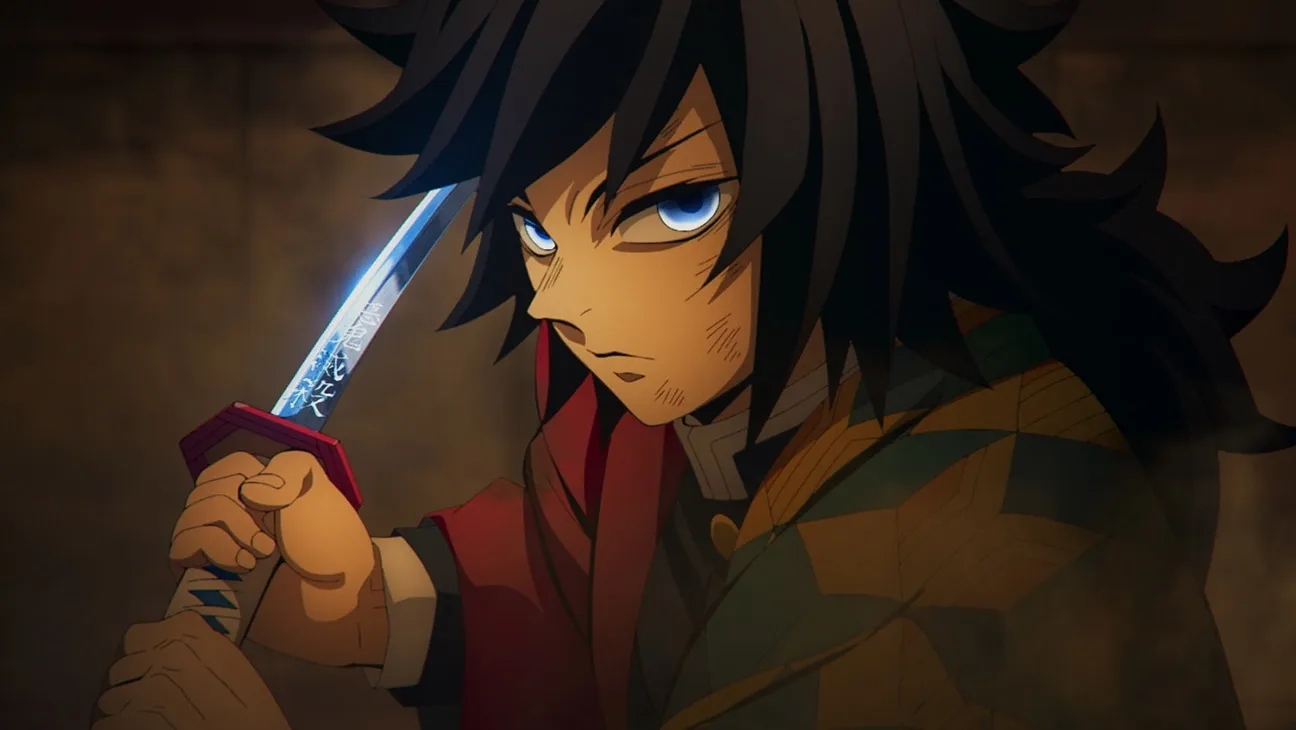
The late summer box office has delivered an unlikely juggernaut: Demon Slayer: Kimetsu no Yaiba – Infinity Castle. The anime epic has stormed past $555 million worldwide, making it the highest-grossing Japanese film of all time and the top-earning anime feature ever released. In North America, where anime movies were once relegated to the margins, Infinity Castle has stunned with $104 million in two weekends — by far the biggest U.S. theatrical run ever for a Japanese title. Given anime fandom’s penchant for repeat viewings — and a planned China release still in the works — there’s no telling just how rich Infinity Castle’s worldwide haul might become.
Demon Slayer (Kimetsu no Yaiba) is based on a wildly popular manga by Japanese artist Koyoharu Gotouge. After the release of an initial TV series adaptation in 2019, the property quickly became one of Japan’s most beloved pop culture exports. The saga follows Tanjiro Kamado, a kind-hearted boy who must transform into a “demon slayer” after his family is slaughtered and his younger sister Nezuko is turned into a demon herself. With lavish animation from Tokyo studio Ufotable, and an emotionally resonant mix of family bonds, heroism and dark fantasy, the series grew even bigger with its first feature installment, Mugen Train, which grossed over $500 million worldwide — in 2020, at a time when the theatrical business was already heavily challenged by the pandemic.
For longtime followers of anime’s rise, the scale of Demon Slayer’s latest success with Infinity Castle is the culmination of trends that have been slowly building for decades. What was once niche otaku culture has become a mainstream global force, embraced by Gen Z and Gen Alpha but increasingly multigenerational, multiracial and borderless in its appeal. Sony, perhaps not surprisingly, recognized this potential sooner than most. Since acquiring anime specialty service Crunchyroll from AT&T in 2020 for $1.18 billion — and merging it with its earlier anime platform buy, Funimation — the Japanese conglomerate has steadily transformed anime from a promising vertical into a core strategic pillar. Today, Crunchyroll spans far more than a subscription platform: it’s also North America’s leading distributor of anime films, a global licensing and merchandising operation, an anime fandom events business and an emerging hub for music and games. At CES earlier this year, Sony executives openly described anime as one of the group’s central growth bets, with the sector forecast to become a $60 billion global industry by 2030.
That corporate realignment has been vividly vindicated by Infinity Castle. Sony Pictures handled the U.S. release, Aniplex co-produced in Tokyo with Ufotable and Crunchyroll activated its deep ties with fandom worldwide. The close collaboration across Sony’s far-flung units helped turn the Japanese animated feature into a global tentpole of Pixar scale — something that might have seemed unimaginable a decade ago, even for the genre’s most revered hitmaker, Hayao Miyazaki of Studio Ghibli. In an internal memo circulated after Infinity Castle’s record-breaking opening, Sony Pictures Entertainment CEO Ravi Ahuja told staff: “The incredible results of this film show the growing global appeal of anime — it wasn’t just dedicated fans who came out to theaters, but a wide range of moviegoers. Contributing in no small part to the success is the strong partnership between Aniplex, Crunchyroll and Motion Picture Group, along with the cross-functional collaboration within our teams.”
For Rahul Purini, the architect of much of Crunchyroll’s expansion, Infinity Castle represents a professional milestone as well as a watershed for anime’s community of artisans. A veteran of Funimation since 2015, Purini helped oversee the Sony-led consolidation of anime streaming in North America before being elevated to president in 2022. His mandate has been to scale Crunchyroll into a global powerhouse while staying true to the authenticity of anime culture. Infinity Castle’s record run has now positioned the Japanese genre not just as a growth category but as a defining force in pop culture — and a pillar of Sony’s identity as a truly integrated Japanese-Hollywood entertainment company. “We have made internal estimates of how big the anime market will be, and we’ve underestimated its growth every year,” Purini told THR in 2024.
The Hollywood Reporter spoke with Purini in the wake of Infinity Castle’s record-smashing North American opening.
What has surprised you and not surprised you about Infinity Castle’s performance so far, particularly in North America?
Well, we knew this brand was huge, and that the IP was something fans loved and would turn out for in large numbers with their friends. We also had a sense of the quality of animation that Ufotable and our partners at Aniplex would produce. Basically, we knew the film was going to be a truly amazing show. If there was anything surprising, it was how many fans turned up that first weekend. We didn’t expect to hit $70 million within the first three days. Now we know there is going to be repeat viewing — the question is just how many times and how many people.
How big do you think the movie’s box office total will get?
We believe it will have longer legs than most. We’ve seen this in Southeast Asia, where we released it in the middle of August. We continue to see fans coming out even after about a month in cinemas. The box office total there is still growing. We’re not sharing any total projections, but we have high expectations.
What does this success tell you about how the audience for anime is changing? Were there any four-quadrant surprises in the results?
I’ve been saying for three or four years now that anime fandom is no longer niche — it’s mainstream and gigantic. What this movie did was show that to the world in a way where there’s a lot of historical context to compare against. At Crunchyroll, we’ve had data and research showing how big and broad anime has become, and we could show it in the context of other shows on our platform. But Infinity Castle’s success is the perfect way to demonstrate this to the broader entertainment world, because it’s happening at the box office, where there are 100 years’ worth of benchmarks. It’s now undeniable how big anime has become.
Another thing we’ve known about — which again showed up in the North American box office — is how wrong many of the myths about anime fandom are. Many people have always said, “Oh, this is a Japanese medium, so it must be heavily indexed toward an Asian audience.” We’ve known for a while that this isn’t the case. It’s a very diverse audience. It overindexes across all different ethnicities. Whether it’s Hispanic, African American, or South Asian, it overindexes. Again, this has been in our data for a long time, but this box office success has been the perfect opportunity for other parties to see it firsthand, via exit polling and more traditional metrics.
Another narrative that gets attached to anime’s growing success is that it’s especially popular among the young — Gen Z and Gen Alpha. Was that true for this film? And if so, what could others potentially learn from your success here? For example, what are some of your most efficient marketing channels for reaching that coveted young consumer?
In terms of your first question, it’s absolutely true. Gen Z and Gen Alpha are a huge part of this fandom. But that doesn’t mean they’re the only age groups. We saw a lot of parents coming to see Infinity Castle with their kids, and there were many fans in their 30s, 40s, and 50s. Anime fandom does over-index among the young, though.
We’ve been cultivating these relationships with young adults for a long time. So, it’s all of the things you would imagine — TikTok, Reddit AMAs, and Discord; hosting real-world events for young fans and influencers to attend; and engaging the celebrity anime fans that young people follow and listen to. It’s also about being very present on YouTube, Roblox, and Fortnite, and in the various other places where this young audience spends time and participates.
Regarding the theatrical release, did Crunchyroll bring any strategies to the table that were different from the traditional way Sony Pictures markets and distributes movies? How did the collaboration work?
One of the things we’re most excited about was how successful the cross-Sony collaboration was on this movie. This is something Sony is uniquely equipped to do, right? We have our partners at Sony’s Aniplex in Japan, who produced the movie, and Sony Pictures in the U.S., who released it. What I tell our anime partners in Japan all the time is that Sony Pictures has over 100 years of experience taking Hollywood stories global — and now the company can do that for Japanese anime too.
We really demonstrated that with this movie, because in every region where Infinity Castle has been released, we broke records. But at every step in the process, it was a true collaboration. We sat down with those distribution teams and they told us about their strengths — how they market, book theaters, and everything they’ve learned. Then we told them what we are uniquely good at — the connections we have with anime fans, our ability to use our own platform to reach this community, and the power of our live events and other channels. Then we all rolled up our sleeves and developed strategies so that one plus one would equal three.
It’s interesting to zoom out and consider this moment within Sony’s corporate history. In the years after Sony acquired Columbia Pictures in 1989, there were some infamous integration pains, as the culture of the Japanese electronics conglomerate struggled to come to grips with Hollywood’s ways. It almost feels like the Demon Slayer phenomenon perhaps marks the moment, all these decades later, when Sony has finally, truly become a culturally integrated U.S.-Japanese entertainment entity. Because Infinity Castle’s success feels like something only a true Hollywood-Japanese fusion could have pulled off.
Well, there have been great examples of other cross-Sony collaborations — something like The Last of Us, which brings together the best of Sony PlayStation with Sony Pictures Television, or Uncharted in the theatrical film world. But I get what you’re saying. Infinity Castle really brings the Japanese cultural aspect into the mix. So yes, I agree; it’s unique. We hope this provides a tailwind not just for Crunchyroll, but for the entire anime ecosystem.
So this is a phenomenal start for the first film in a trilogy. When are the next two films expected to be released? And is there any sense of urgency now about getting them out a bit sooner?
Well, we’ve announced that it will be a trilogy of movies, but our partners at Aniplex and Ufotable haven’t decided on dates yet. But look, there’s definitely urgency for all of us to bring more Demon Slayer to fans as soon as we can — because we know the urgency is there among the fanbase.
Is it likely that the blockbuster success of the first installment will mean that you go even bigger with the next two, in terms of budget and spectacle?
Well, we’re still in the midst of the first one’s release, so all I can say for now is that we’re working closely with our partners to make sure the next two movies are going to be just as amazing — if not better.
What do you anticipate the material benefits of this theatrical success will be for Crunchyroll’s streaming business, merchandising arm and the other facets of your platform?
We’ve always talked about wanting to be everything for someone — that anime fan — rather than something for everyone. This theatrical success creates a halo and momentum for the other parts of that flywheel, whether it’s merchandise, games, anime music, or the streaming service itself. For example, in August, we created a promotion that allowed people to watch an entire season of the Demon Slayer series outside of our subscription service. We’re continuing that offer now. So people who’ve heard about this movie, or went to check it out with friends, can now come and experience the full TV show too. Our goal is to make sure these new viewers have an amazing experience. Hopefully, we can then introduce them to a few more shows they’ll enjoy — and then there’s a whole universe of fandom waiting for them.
Is it possible that Crunchyroll will end up having the exclusive streaming rights to Infinity Castle?
We always love to give our members something unique, so we’d absolutely want to have that conversation with our partners. But it’s up to Ufotable, Aniplex, and the production committee to make the right decision in terms of what’s best for the brand and the IP.
In the streaming space, you’ve already seen plenty of competition from the big platforms — Netflix, Amazon and Disney. They’ve long been aware of the power of anime to build their global subscriber bases and they’ve been spending big accordingly. In the wake of Infinity Castle’s theatrical success, do you expect to see other U.S. studio players attempt to compete in this arena on big screens in North America? And what do you think their chances of success are?
For sure, there will be more people who want to serve this audience. It will be the same among the theatrically focused studios soon enough. We’ve always said that’s good because the audience is already big, and as it grows, we feel strongly that we’re well-positioned to take advantage of that expansion. We feel very good about our place and strength in the ecosystem.
So, Infinity Castle is the year’s biggest animated film of any kind at the North American box office so far. Next comes the awards strategy. Do you plan to campaign for best animated feature and other categories at the Oscars?
We think the movie is incredible — the animation, the story, the quality on all fronts. So yes, the fans absolutely deserve for the movie to be considered for awards. We’ll do our part to make sure it gets the right level of support to be considered in all of the categories it could be eligible for.



